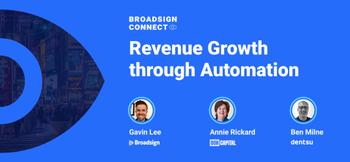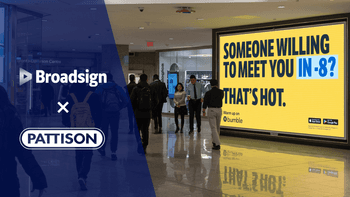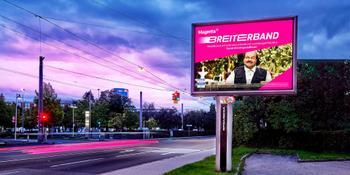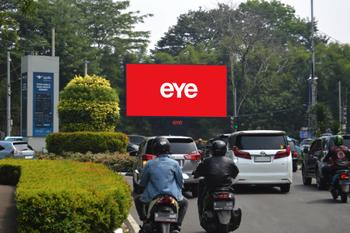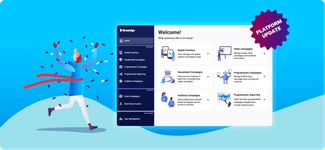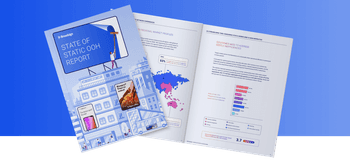Broadsign recently hosted a panel discussion at our Broadsign Connect 2024 Summit in Barcelona, where we invited out-of-home (OOH) experts to share their insights and perspectives on how automation for direct selling can help media owners improve their bottom lines.
Moderated by Gavin Lee, Sr Director of Product at Broadsign, he spoke with Annie Rickard, a partner at OOH Capital with over 30 years of executive experience in OOH. We also had Ben Milne as a panellist, who’s currently the global head of out-of-home media at Dentsu, where he leads location-based marketing specialists around the world. Check out the highlights below.
Leveling the playing field for OOH with other channels through automation
In today’s fast-paced marketing landscape, the decision-making cycle for marketers is incredibly short, and media is only one of their multifaceted responsibilities. While the booking process for OOH is relatively quick, the planning and buying process often requires longer lead times than other channels.
That is, discovering which inventory is available and relevant to the brief, gathering the data and evidence to demonstrate the medium’s effectiveness in delivering campaign goals, then managing the content and deciding where the creative will go. With approximately 80% of this process being manual, attracting advertisers to use the medium can be a challenge.
Furthermore, once a campaign is complete, the performance metrics can be challenging to extract or might be presented in a different fashion than with other channels. And while media owners can answer the questions around attribution and brand lift, the processes and methodologies are not only different from other channels but much more complex and fragmented.
That being said, automated workflows can help eliminate reasons for advertisers to say no and remove out-of-home from their media plans. Not only can it streamline many of the current manual processes, but it also helps to drive consistency in our structure and standards around data and measurement, making it more appealing and accessible to advertisers.
Automation can also bridge the gap between traditional and digital OOH, according to Ben Milne, Head of Out-of-Home Media at Dentsu. “At the moment, a lot of advertisers think digital out-of-home is effective, and it can be attributed, and they’re not applying that same thinking to [static] out-of-home. And so I think raising that on an automation level, on a platform level, will level the playing field between out-of-home and digital out-of-home.”
Automation and proof-of-concepts will help increase spend in OOH
Advertisers aren’t actively searching for ways to make planning and buying OOH more efficient for them. Therefore, if it is inadvertently inefficient, they will spend their budget on other channels. With more automated workflows, media owners can attract buyers by offering them benefits like speed, access to inventory, data analytics, and consistency. Here’s Annie explaining more about the benefits:
“Anything that makes the medium easier to understand, easier to buy, easier to prove, will grow spend in out-of-home.”
Annie Rickard, Partner at OOH Capital
Another factor to take into account when looking at ways to increase advertiser spend in OOH is eliminating internal stakeholder resistance. A lot of advertisers want to use OOH but might not due to internal stakeholders, like their CFOs or CEOs, not seeing the effectiveness of the medium. Media owners can help alleviate this roadblock by collaborating with brands and agencies on their strategies and proof of concept to promote the usage of OOH.
Additional benefits media owners stand to gain through automation
OOH often faces the misconception of being outdated, but this overlooks the significant investments made by media owners to continuously evolve their infrastructure, data partnerships, and technology to meet the ever-changing market demands. There is an opportunity for media owners to leverage these investments to streamline the planning and buying process of OOH regardless of the type of inventory. This would significantly help in changing how advertisers perceive the medium.
Currently, advertisers see OOH as two different parts: digital OOH and everything that it can do, and traditional OOH and everything that it can’t do – failing to see the comprehensive benefits both can offer. While there will always be some differences in how the mediums are executed, the way we plan and sell them should be done consistently. As we continue to move towards a more unified approach, advertisers will see the medium in a new light, not as static or digital, but rather in-advanced and real-time OOH.
Furthermore, while automation will deliver cost savings to media owners due to increased efficiency, that doesn’t mean they will only need half of their staff. In fact, there will be an increased requirement for media owners’ teams to sell the benefit of the medium to take advantage of the cost-saving benefits automation offers.
“We talk a lot in programmatic about capturing the money that’s being left on the table. I think there is money being left on the table that could go into, whether static or non-programmatic digital, that’s absolutely being left on the table”, says Milne. Here’s him explaining how:
Enabling more automated transactions in OOH will attract new buyers
Embracing automation in out-of-home advertising signifies a significant shift for media owners, one that may bring about discomfort as they navigate unfamiliar territories. For instance, sharing real-time availability for all inventory can disrupt the current pricing dynamics and negotiation processes. Media owners with extensive geographical footprints may also encounter difficulties due to disparate systems that fail to connect seamlessly.
However, overcoming these barriers presents an opportunity for transformative change. By streamlining processes and improving connectivity, media owners can build more efficient and effective OOH advertising strategies, unlocking new avenues for growth. Here’s Annie with more:
“The demonstration of openness and transparency made the medium much more interesting, and much more attractive to buyers because they could start to use that data to build the case for why they were using out-of-home or how effective it was going to be.”
Annie Rickard, Partner at OOH Capital
Want to access more content from the Broadsign Connect 2024 summit?
Check out the event page to watch the keynote sessions on demand.
